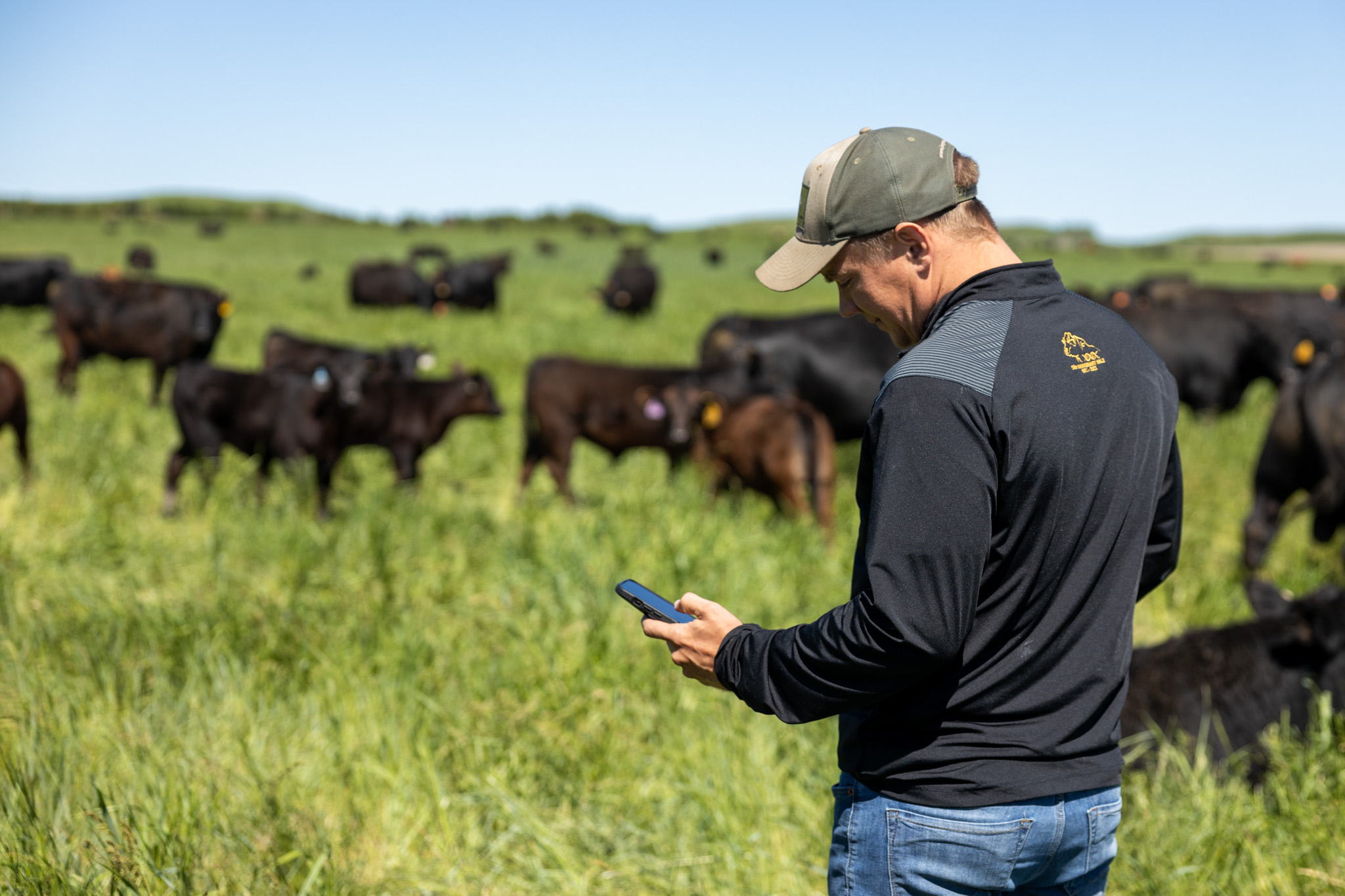eShepherd™ for Rotational Grazing at Scale: Jorgensen Land and Cattle
Friday, 27 September, 2024

In Ideal South Dakota, Jorgensen Land and Cattle are implementing adaptive rotational grazing, replicating the natural grazing patterns of the bison that once tread these vast prairie lands. Using virtual fencing, CEO Nick Jorgensen tells us how he is maximizing the use of his pasture without the need for added labor.
With around 1,500 Angus females spread across approximately 13,000 acres of native prairie grass in Northern Chip County, Jorgensen Land and Cattle initially faced significant logistical challenges when looking to improve their pasture utilization. Traditional methods of rotational grazing proved cumbersome, requiring extensive physical infrastructure and manpower. "Lots of people do rotational grazing, and I'm sure lots of them do it in larger herds like ours," explained Nick Jorgensen. "But what we found is that we've got too many groups of cows spread out too far apart on too many acres, and we didn't want to stretch our team out too thin."
The integration of the Gallagher eShepherdTM system has revolutionized the management of their expansive herd and grazing lands. Nick says this technological advancement has transformed their day to day operations.
The Gallagher eShepherd system offered a way to implement effective rotational grazing without the need for physical fences and constant human intervention. "I don't want to ask our team to come in on Saturday and Sundays to pull off a move. I don't want to have them come out on a weekend and move a half-mile poly wire here or there," Jorgensen noted.
One of the standout features of the Gallagher system is the ease of implementation. The neckbands arrive fully assembled and ready to use. "All we had to do was pull them out, set them outside to charge in the sun, and turn them on. That was it. There was no assembly required whatsoever," said Jorgensen. The neckbands are designed for quick application, saving time and effort.
The user-friendly platform of the eShepherd system has also been a significant advantage. "Utilizing the platform is very user-friendly and easy to learn," Jorgensen said. The system allows real-time monitoring of the cattle's location and grazing patterns, providing peace of mind. "It's really nice to always know where your cattle are even if you aren't with them."
From an animal health perspective, the system has shown benefits as well. The calves, which do not wear neckbands, tend to graze ahead of the cows, accessing fresh and nutritious forage. This behaviour mimics natural grazing patterns observed in native prairies. "What grazed them before we came? It was bison," Jorgensen explained. "They came in and mobbed something. Herds of thousands of Bison would come in and graze out an area and then they would move on and not come back for who knows how long, allowing the grass to regrow."
"All in all, Jorgensen Land and Cattle is very satisfied with the experience we've had with Gallagher and the eShepherd system thus far," he said. "I don't know how much easier it could be than what Gallagher has already made it."
As they continue to leverage this technology, the goal is to expand its use across the entire herd. "Right now, we've got it on about 1/5 of the animals, 20%. I'd love to say that in the next 5 years we've got 100% utilization," Jorgensen stated.
If you’d like to learn more about the eShepherd system and how it can transform your ranching operation, reach out to our eShepherd team here.